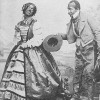St. James's Theatre, King Street, London
St. James’s Theatre was a 1,200-seat theatre in King Street, St. James’s, City of Westminster, in London’s West End. The theatre opened on 14 December 1835 with a mixed program of comic operas, Shakespearian readings, and foreign plays. The theatre underwent changes in 1900 when the building that adjoined it was rebuilt and included into the Theatre to provide more space and a new stage door. The Theatre closed and was demolished in 1957.
Coordinates
Latitude: 51.506366849128
Longitude: -0.137672424316
Longitude: -0.137672424316

